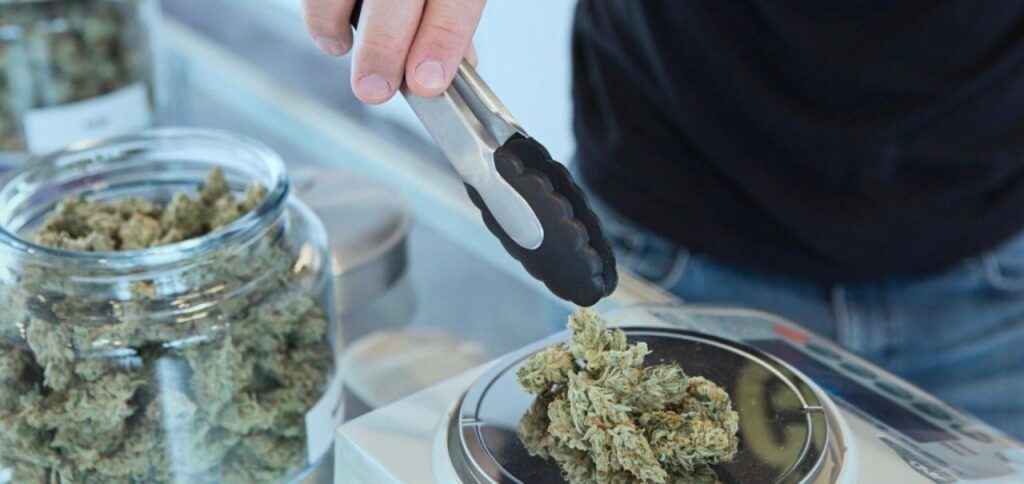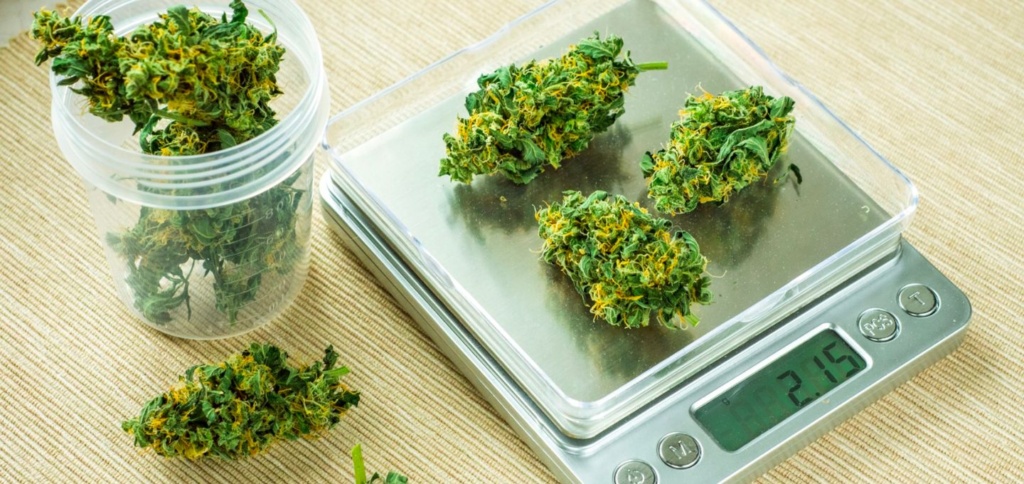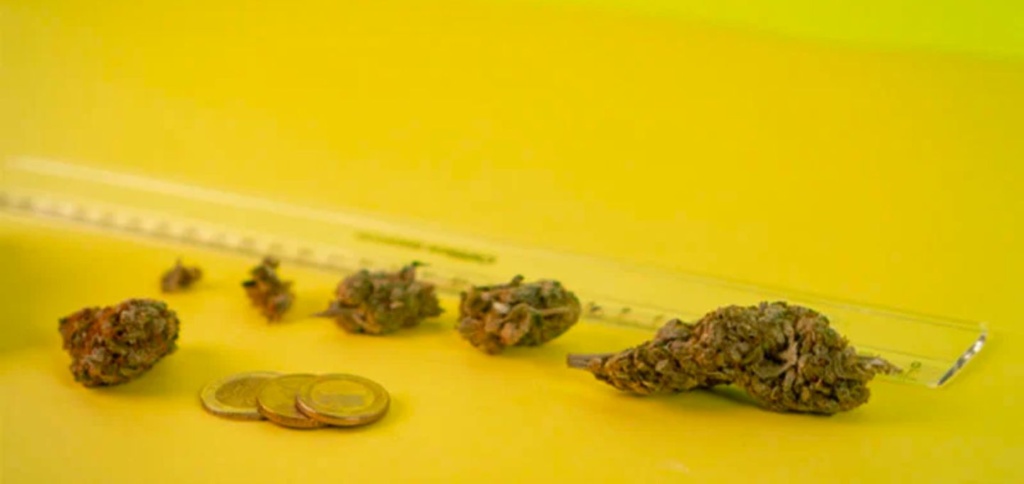Cannabis-Friendly Dispensaries in Sacramento
Introduction of Cannabis-Friendly Dispensaries in Sacramento Sacramento is a city located in California. It is the largest city...

Table of Contents
Do you find yourself confused about the different units used in weed measurements?
Don’t worry!
We’ve got you covered. Whether you are a seasoned cannabis enthusiast or just beginning to explore the world of cannabis, knowing the measurements of weed is crucial.
Insight – The most frequently encountered measuring unit for weed is the gram (g). This small unit serves as the foundation for larger measurements and is commonly used when purchasing or discussing cannabis quantities. The other most common units of measurement for weed are ounces (oz), pounds (lbs) & kilograms (kg).
Let’s explore each unit in detail along with the common methods of measuring weed and practical tips on how to accurately measure your cannabis.
A gram (g) is the fundamental unit of measurement when it comes to weed.
It represents a small quantity of cannabis and is widely used in the cannabis community for discussing, purchasing, and consuming marijuana. A gram is especially useful for personal use.
An ounce is equivalent to 28 grams and represents a larger quantity of marijuana.
Many cannabis enthusiasts and consumers prefer to purchase cannabis in ounces as it allows for more extended use.
Ounces are often used as a standard unit for bulk purchases, and they provide a convenient reference point for pricing and quantity discussions within the cannabis community.
While ounces are suitable for most individual consumers, the cannabis industry also deals with larger quantities, which are measured in pounds (lbs).
A pound of weed contains 16 ounces or approximately 453 grams. Pounds are commonly used for wholesale transactions, cultivation operations, and the manufacturing of cannabis products.
In addition to the commonly used ounce and pound, the metric system offers another unit of measurement for weed—kilograms. A kilogram (kg) is equal to 1,000 grams or about 2.2 pounds (lbs).
While kilograms are less frequently used in everyday cannabis transactions, they play a significant role in larger-scale operations, such as cultivation, distribution, & international trade.
Also Read:

1 ounce (oz) = 28 grams (g)
If you have a specific amount of cannabis in grams & want to know the equivalent in ounces, simply divide the number of grams by 28.
For instance – If you have 56 grams of weed, dividing it by 28 gives you: 56 grams / 28 = 2 ounces
1 pound (lb) = 16 ounces (oz)
To convert ounces to pounds, divide the number of ounces by 16.
For instance – If you have 32 ounces of cannabis, dividing it by 16 gives you: 32 ounces / 16 = 2 pounds
1 kilogram (kg) = 1,000 grams (g)
To convert g to kg, divide the number of grams by 1,000.
For instance – If you have 5,000 grams of marijuana, dividing it by 1,000 gives you: 5,000 grams / 1,000 = 5 kilograms
| Unit of Measurement | Symbol | Grams | Ounces | Pounds |
| Gram (g) | g | 1 | 0.035274 | 0.002204622622 |
| Ounce (oz) | oz | 28.35 | 1 | 0.0625 |
| Pound (lbs) | lbs | 453.592 | 16 | 1 |
| Kilogram (kg) | kg | 1,000 | 35.274 | 2.204622622 |
Also Read:

Investing in a high-quality digital scale designed for precise measurements of weed is highly recommended.
Avoid using kitchen scales or other generic scales as they may not provide accurate readings for smaller quantities.
A reliable scale ensures that you can measure your cannabis with precision, whether you’re dealing with grams, ounces, or larger quantities.
Also Read:

A digital scale provides precise measurements in grams, ounces, or other units, ensuring accuracy & consistency. Follow these steps to weigh your cannabis using a digital scale:
While it is less accurate than using a scale, it can provide a rough idea of the quantity of weed you have.
However, keep in mind that visual estimation can be subjective and vary depending on the density and size of the buds. Make an educated guess based on your experience and the visual reference points.

In situations where you don’t have access to a scale or need a quick estimation, you can use common household items with known weights as makeshift measuring tools such as –

It’s crucial to be aware of the local laws & regulations in your jurisdiction when it comes to measuring weed.
In the US, laws related to marijuana/weed vary from area to area – with some states legalizing its recreational and/or medicinal use, while others maintain very strict rules & regulations.
It’s necessary to be familiarized with the specific laws & regulations in your state about the cultivation, possession, sale & transportation of weed.
These laws often outline the legal limits and allowable quantities for personal possession and distribution.
Also Read:
Regional variations in cannabis culture, laws, and market practices can influence the units and quantities commonly used in different parts of the world.
For example, in the United States, the gram, ounce, and pound are widely recognized and used units of measurement. However, in countries where the metric system is more prevalent, such as Canada or parts of Europe, grams & kilograms are the standard units for measuring cannabis.
If you are traveling or engaging with international cannabis communities, it’s advisable to familiarize yourself with the specific units and quantities used in those areas to ensure effective communication and understanding.
Also Read:
Dime Bag: Refers to a small quantity of cannabis typically costing around $10. The exact weight can vary but is generally around one gram.
Eighth of an Ounce: It represents 1/8th of an ounce of weed/cannabis. In the United States, an eighth typically weighs around 3.5 grams.
Quarter: Refers to a quarter of an ounce of cannabis, weighing approx. 7 grams.
Half of an Ounce: Short for “half-ounce,” it represents half an ounce of cannabis, weighing around 14 grams.
Ounce: A commonly known term representing a full ounce of cannabis, which weighs approximately 28 grams.
Pound: Refers to a unit of measurement equal to 16 ounces or 453 grams. Pounds are typically used for wholesale transactions and commercial operations.
Accurate weed measurements are of utmost importance in various aspects of cannabis consumption, purchase, and sharing.
Whether you are using weed for recreational or medicinal purposes, precise measurements allow you to achieve consistent & desired effects.
To improve your weed measurement skills and to make sure its accuracy, it is recommended to invest in a reliable digital scale designed particularly for measurements of weed.
Handling & storing cannabis responsibly and using a perfect unit of measurement will also help. It will ensure accuracy and consistency in your measurements, enabling you to dose accurately and make informed decisions.
Enjoy your cannabis responsibly and stay informed about the legal regulations in your jurisdiction.
Introduction of Cannabis-Friendly Dispensaries in Sacramento Sacramento is a city located in California. It is the largest city...
Introduction of Cannabis-Friendly Dispensaries in Modesto If you are interested in cannabis products, you will find numerous cannabis...
Introduction of Cannabis-Friendly Dispensaries in Oakland Oakland is a city located in California. It has a statue of...
Introduction Of Cannabis-Friendly Dispensaries in San Jose San Jose is a great city located in California. It is...
Introduction Of Cannabis-Friendly Dispensaries in Fresno Fresno is a city situated in California, where many zoos are present....